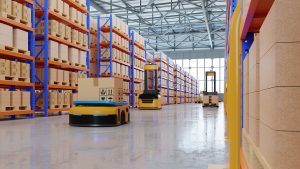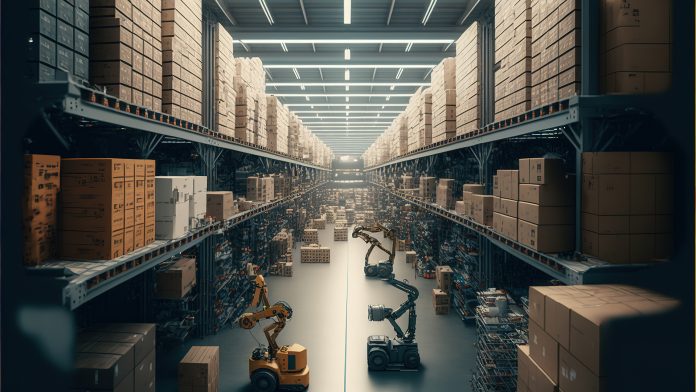Jamie Mottershead, Technical Director at Renovotec, highlights how businesses can use sensory technologies to supercharge their smart warehouse.
The smart warehouse is evolving rapidly and is a far cry from the first automatic high-bay warehouse built in 1962 in Germany for a publisher to store millions of books.
Today, new technologies such as AI, robots, automation, and detailed analytics provide the full sensory spectrum to make intelligent decisions for optimum productivity in the warehouse.
When the best of these technologies are working in harmony, these warehouses’ efficiency and productivity benefits are multi-fold, and ROI is very quickly and sustainably achieved.
But with so many options and budgets still squeezed after COVID-19, it can often seem overwhelming to work out what is best for building a smart warehouse.
Top five sensory technologies to supercharge a smart warehouse
- RFID: the sensors for the smart warehouse
Radio Frequency ID (RFID) technology revs up operations by automatically locating tagged objects faster, more accurately, and at more volume than traditional methods.
Unlike barcodes, the workforce can track, trace and inventory assets from anywhere in real-time, using hands-free devices.
RFID tags and scanners dramatically improve product and materials handling inside and outside the warehouse environment.
- Machine vision: the eyes for the smart warehouse
Machine vision represents one of the most exciting Industrial Internet of Things (IIoT) and industry 4.0 technologies to emerge and revolutionise supply chain operations.
Experts predict the machine vision market will expand at a compound annual growth rate (CAGR) of 7.2% over the five-year forecast period (2023–2030).
Machine vision replaces the human eye with processes that enable robots and computers to perceive and interpret their surroundings visually. They use advanced imaging techniques like cameras, sensors, and imaging processing algorithms to mimic the capabilities of human vision and allow them to be used to enhance business processes.
This means that machines can perform tasks that require visual inspection or analysis, extract meaningful information from images or video streams and use it to make intelligent decisions.
- Voice-directed warehousing: the hands for the smart warehouse
Voice-directed warehousing (VDW), also known as voice picking, is a paperless, hands-free and eyes-free system that utilises industry-leading technology to automate the myriad of smart warehouse processes.
In the 1990s, voice technology relied on more cumbersome devices that were limited to picking functions. Today, voice-directed solutions can solve many issues in the supply chain to optimise and automate all manual, hands-on processes, such as packing & consolidation, replenishment & short filling, truck loading & shipping and cross-docking.
Introducing voice-guided workflow technology has been a game changer for smaller distribution centres. With robust speech recognition, wearable mobile device headsets have enabled smaller organisations to quickly implement hands-free, paperless, voice-guided workflows while utilising existing software and mobile technology investments.
Voice-enabled technology is rapidly evolving in terms of innovation in hardware, software, Warehouse Management System (WMS) integration and the tasks it enables warehouse workers to achieve. In fact, It is predicted that 45% of warehouses will adopt this technology over the next two years, and the global voice-directed warehousing solution market is expected to grow around 12% annually from 2021-2031.
- Autonomous mobile robots: the hard labour for the smart warehouse
The world of robotics and Autonomous Mobile Robots (AMRs) is a hot topic in the logistics sector right now, with the AMR market size predicted to reach $22.15 billion by 2030. It is not surprising considering the efficiency benefits self-driving AMRs bring to the smart warehouse, including reduced labour costs, increased workforce productivity, improved accuracy, and scalability.
There are many variations of AMR solutions on offer. Some of the options to consider include Collaborative AMRs, which can dramatically reduce the amount of walking time for an operator by the robot completing the hard miles for your warehouse business, or Goods to Man AMRs, which can provide extremely high productivity gains for both putaway and picking.

The important thing is to make sure you use the flexibility and scalability that AMR solutions can bring to your advantage and where possible, start small to learn how the solution will impact operations.
- AI-boosted technology: The intelligent analytics for the smart warehouse
AI-boosted technology can transform the warehouse in countless ways and enhance the cognitive abilities of the full technology stack in your smart warehouse.
For example, while machine vision technology does provide outstanding improvements for the supply chain, it’s enhanced by the integration of AI.
Machine vision complements AI by providing the image data accurately and at a speed that AI needs to make complex decisions, adapt, learn, and make intelligent decisions. AI algorithms also enable machines to learn continually, meaning that their performance continues to improve over time.
AI has the potential to revolutionise warehouse operations
Other areas AI boosts the efficiency of the smart warehouse include AI-powered analytics, predictive maintenance, real-time tracking, and smart climate control.
Al is addressing all the supply chain and logistics challenges imposed on businesses from the pandemic and, in many ways, has become the recovery hero for many supply-chain businesses.
Overall, it is fuelling growth and ROI with its plethora of productivity, safety, and sustainability benefits.









